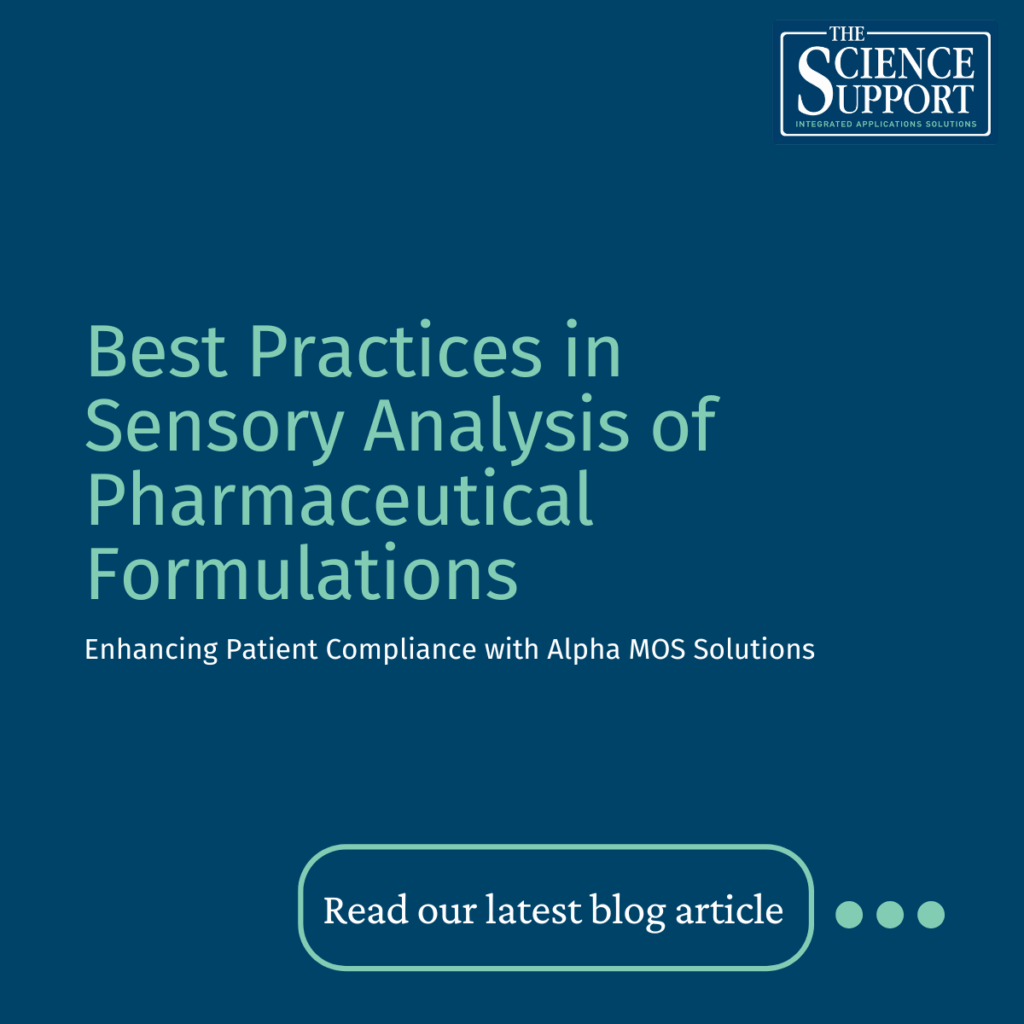Best practices in sensory analysis of pharmaceutical formulations – Enhancing patient compliance with Alpha MOS solutions: In pharmaceutical development, the sensory attributes of a medication, such as taste, smell, and mouthfeel, play a crucial role in patient compliance, especially among pediatric and geriatric populations. Unpleasant sensory characteristics can lead to medication refusal, undermining therapeutic efficacy. Therefore, integrating sensory analysis into the formulation process is essential for developing patient-friendly medications (Clapham, 2023).
Understanding Sensory Analysis in Pharmaceuticals
Sensory analysis is a scientific discipline that evaluates how products are perceived by the senses. In the context of pharmaceuticals, it involves assessing the organoleptic properties of formulations to ensure they are acceptable to patients. This process includes both human sensory panels and instrumental methods to obtain objective, reproducible data (Tisi).
A comprehensive guide on best practices in sensory analysis for pharmaceutical formulations emphasizes the importance of early integration of sensory evaluation in the drug development process. It outlines methodologies for risk assessment, regulatory considerations, and practical approaches for conducting sensory studies throughout product development (Clapham, 2023).
Alpha MOS: Advanced Instrumental Solutions for Sensory Evaluation
Thanks to our partnership with Alpha MOS, we offer cutting-edge instruments that provide objective, rapid, and reproducible sensory analysis, complementing traditional human panel assessments. Alpha MOS’s technologies are particularly beneficial in the pharmaceutical industry for optimizing formulation palatability and ensuring consistent product quality.
Key Alpha MOS Instruments:
- ASTREE Electronic Tongue: Simulates human taste perception to evaluate and compare the taste profiles of pharmaceutical formulations, aiding in taste masking and flavor optimization.
- HERACLES Electronic Nose: Analyzes volatile compounds to assess the odor profile of products, ensuring olfactory acceptability and detecting potential off-odors.
- IRIS Electronic Eye: Evaluates the visual appearance of products, including color and shape, to ensure visual consistency and appeal.
These instruments enable pharmaceutical developers to conduct comprehensive sensory evaluations, leading to formulations that are more acceptable to patients and, consequently, better adherence to treatment regimens.
Implementing Best Practices in Sensory Analysis
To effectively incorporate sensory analysis into pharmaceutical development, the following protocol is necessary:
- Early Integration: Include sensory evaluation in the initial stages of formulation development to identify and address potential acceptability issues promptly.
- Combined Methodologies: Utilize both human sensory panels and instrumental analysis to obtain comprehensive sensory profiles.
- Regulatory Compliance: Adhere to guidelines and best practices outlined in regulatory documents to ensure that sensory studies meet industry standards.
- Continuous Monitoring: Implement ongoing sensory assessment throughout the product lifecycle to maintain consistent quality and patient acceptability.
Conclusion
Incorporating sensory analysis into pharmaceutical formulation development is vital for creating patient-centric medications. By leveraging advanced instrumental solutions from Alpha MOS, pharmaceutical companies can objectively assess and optimize the sensory attributes of their products, leading to improved patient compliance and therapeutic outcomes.
For more information on integrating sensory analysis into your pharmaceutical development process, contact The Science Support at sales@thesciencesupport.com. Explore our complete portfolio of analytical and general laboratory equipment solutions here.
Bibliography
Clapham, D. e. (2023). A Guide to Best Practice in Sensory Analysis of Pharmaceutical Formulations. Pharmaceutics, p. 15(9):2319.



